Features of pruning dracaena
Dracaena is a houseplant that is sometimes useful for pruning. Reducing the size of the flower rejuvenates and promotes the emergence of new shoots. Sometimes sanitary pruning is necessary - removing diseased or damaged plant parts.
Pruning goals
There are several main reasons for this procedure.
- Deterioration in the appearance of the plant. Sooner or later, dracaena loses its lower leaves. Pruning is carried out in order to obtain side shoots.
- Desire to propagate a flower. Apical cuttings are the ideal material to grow a new dracaena on your own.
- It is necessary to adjust the shape of the dracaena. Over time, some branches begin to grow disproportionately. The procedure improves the silhouette of the flower, making it more luxuriant.
- The plant is sick or attacked by pests. In this case, sanitary pruning is carried out, which will not only return an attractive appearance, but also help maintain the health of the flower.
Important!
The condition of the flower depends on the season. From October to early March, dracaena rests, is in vegetative rest. During this period, no branch removal work is carried out. An exception is made only for urgent sanitary pruning, when emergency help is needed to save the plant.
From March to the end of September is the best time for flower rejuvenation. The ideal moment is the beginning of a period of active growth, from mid-spring to June.
Trim Algorithm
The pruning procedure consists of several important steps, each of which requires attention.
- Tool preparation. You can use a small pruner, a sharp knife, or scissors. The trimming device must be washed with warm water and soap and disinfected, for example, with an alcohol solution. Cleanliness is a guarantee that the wound will not become infected.
- Check the condition of the dracaena and determine which parts to remove.
- The trunk is cut at a distance of 10-20 cm from the base. The cut should be even, without chipping. It must be treated with an antiseptic, such as charcoal or activated carbon powder.
- When the cut dries up a little, pieces of moss are wound around it and this part of the trunk is wrapped in a plastic bag, secured with an elastic band or twine. In such a mini-greenhouse, high humidity is constantly maintained. The place of the cut is regularly sprayed abundantly to activate the growth of young shoots. A growth stimulant can be added to the water, for example "Zircon" or "Epin" according to the instructions.
- After about two months, small buds will hatch, after which the moss and the bag are removed.
Advice
Sometimes dracaena has a slightly wrinkled trunk. This may be the first sign of decay. You need to carefully examine the stems, root and neck of the flower. If there are signs of rot, all damaged areas must be removed. Sanitary pruning should be done very carefully with a clean tool. After all, a sick flower has a reduced immunity, it becomes very vulnerable. Sprinkle cinnamon powder or other natural antiseptic on all affected areas. If the root system is damaged, the flower may not survive, but it can be propagated using the remaining healthy parts of the plant.
Sap flow in the flower goes from bottom to top. After pruning, nutrients and moisture continue to flow to the top of the stem. This strengthens the plant and stimulates the growth of new shoots.
Taking care of the flower after the procedure
After pruning, careful care of the dragon tree is required.
- The flower is placed at a distance of 1-2 m from the south or southwest window.
- Sprayed daily.
- Water it once every 5-7 days, after checking that the soil is not wet at a depth. It is convenient to do this with a dry wooden stick.
- Once a month, it is helpful to place the pot in a container of water for about 10 minutes, until air bubbles stop coming out. After this procedure, the next watering is carried out no earlier than a week later.
- They are fed twice a month during the period of active growth with fertilizer for decorative leafy plants.
- The optimum air temperature for dracaena is from 15 to 22 degrees.
Reproduction by apical cuttings
After shortening, the cut parts remain, from which new young plants can be obtained. For reproduction, dracaena tops about 15 cm long are suitable, on which there are at least two leaves. The lower leaves are removed from them, which can rot on contact with water.
There are two ways to propagate by tips.
- In the ground.
A third of the length stalk is stuck into a suitable-sized pot with a light substrate that allows water to pass through well. Around the stem, the ground must be slightly crushed so that the plant does not fall. The flower pot is placed in a place protected from direct sunlight, creating a warm and humid atmosphere, for example, by covering it with a transparent plastic bag. Dracaena is carefully looked after, regularly watered and aired.
- In water.
Pure water is poured into the vessel and a piece of activated carbon is added for disinfection. The stalk is inserted into the container in such a way that its upper part is in the air, and the leaves do not come into contact with water.
Important!
It is worth remembering that the container with the plant should not be placed in direct sunlight. You need to add water regularly.
The flower is planted in the substrate when the length of the first roots is about 5 cm. It is not necessary to overexpose the plant in water, this impairs the adaptation of the dracaena.
Propagation by stem cuttings
Dracaena bordered, the most common variety, can be propagated at home with pieces of a stem without leaves 3-7 cm long. The upper cut-off part of the plant is rooted using the apical method, and the lower (bare) part is bred with stem cuttings.
Stages of work:
- cut the cuttings into pieces about 5 cm long with a clean tool, each should have at least 2-3 eyes (thickened places where the leaves used to be);
- the workpieces are placed in the soil for indoor plants, the thicker part is placed at the bottom;
- slightly compact the ground, half of the appendage should remain outside;
- plantings are covered with a transparent film, kept warm, watered and sprayed regularly;
- young shoots appear in about two months - they are gradually accustomed to their natural environment by sliding the lid.
Indoor plants always require the attention of their owners. If you cut the dracaena in time, a wonderful home tree will delight others for a long time, because under favorable conditions, the life of this flower is more than ten years.


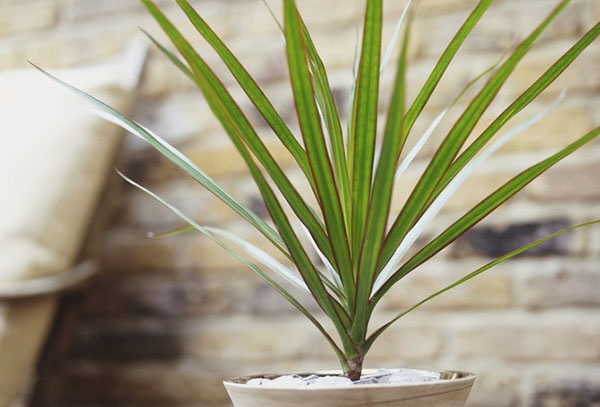
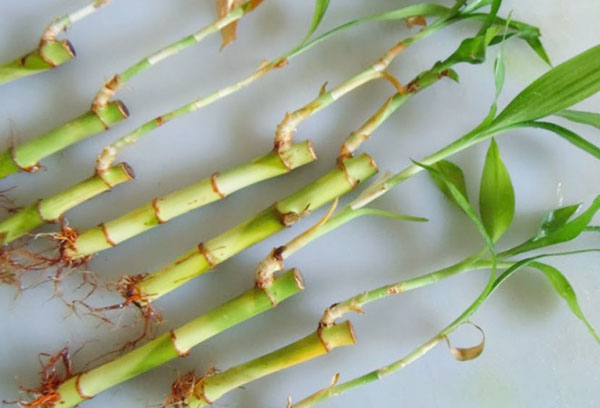
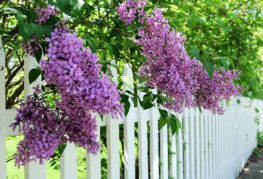
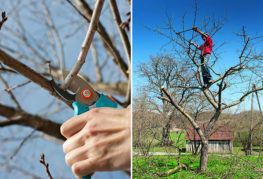
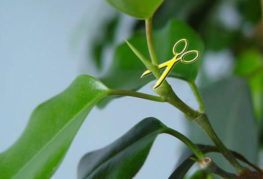

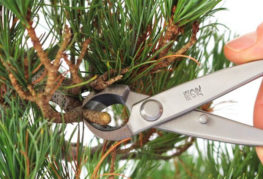
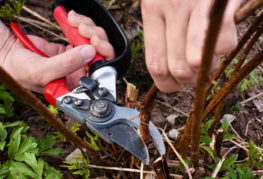
and will be published shortly.